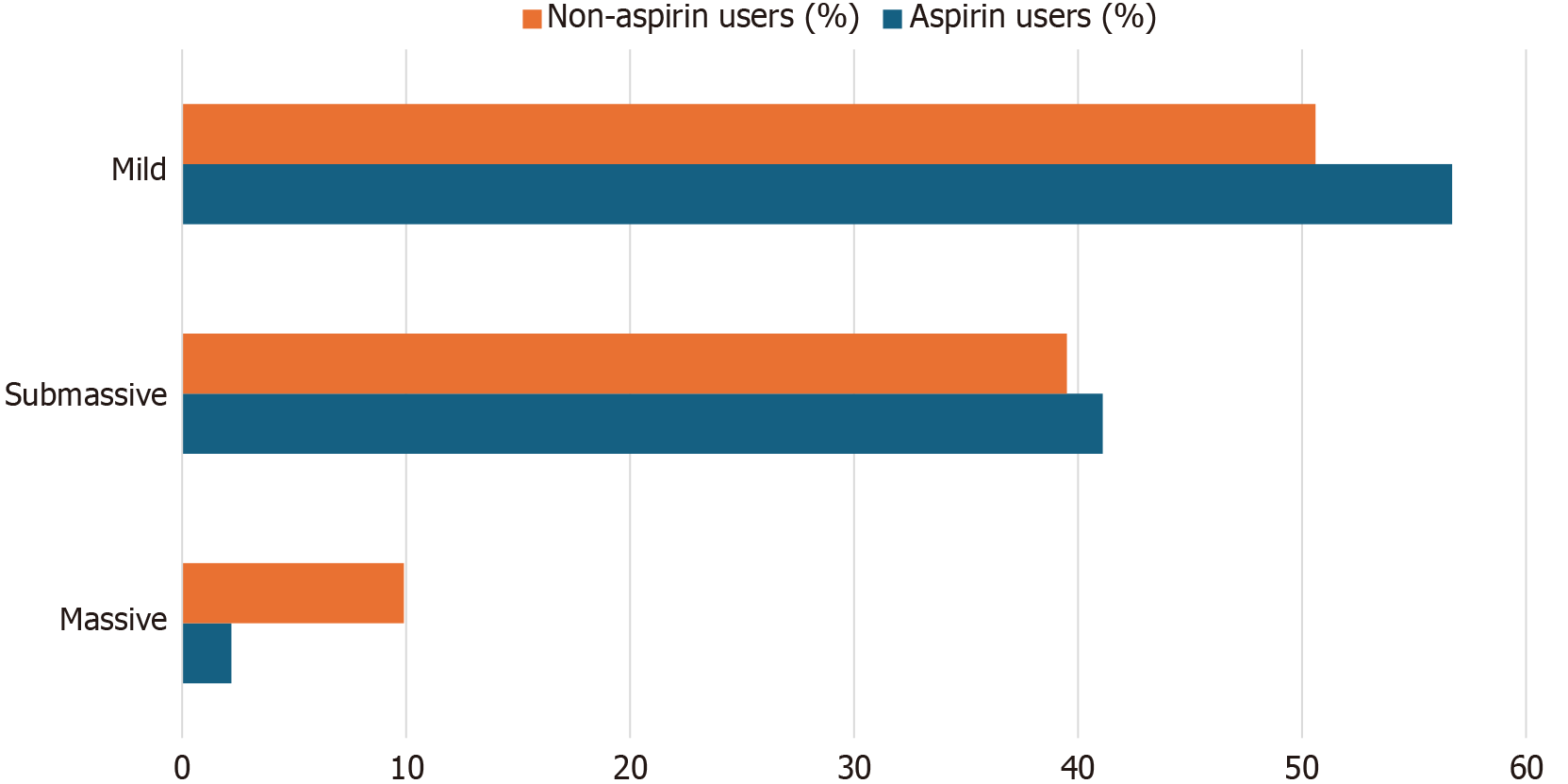Copyright
©The Author(s) 2025.
World J Cardiol. Nov 26, 2025; 17(11): 110178
Published online Nov 26, 2025. doi: 10.4330/wjc.v17.i11.110178
Published online Nov 26, 2025. doi: 10.4330/wjc.v17.i11.110178
Figure 1 Odds ratios for clinical outcomes associated with prehospital aspirin use.
Forest plot displaying the odds ratios and 95% confidence intervals for key adverse outcomes among patients with pulmonary embolism who were or were not on prehospital aspirin therapy. Prehospital aspirin use was associated with significantly lower odds of radiographic right ventricular strain, intensive care unit admission, shock, and need for catheter-directed thrombolysis (Ekosonic endovascular system). Mortality showed a strong association favoring aspirin use. A vertical dashed line indicates the null value (odds ratio = 1.0). EKOS: Ekosonic endovascular system; ICU: Intensive care unit; CT: Computed tomography; RV: Right ventricle; OR: Odds ratio.
Figure 2 Distribution of pulmonary embolism severity by prehospital aspirin use Bar chart comparing the proportion of patients presenting with massive, submassive, and mild pulmonary embolism based on prehospital aspirin use.
A lower percentage of massive pulmonary embolism was observed in the aspirin group, suggesting a potential attenuation of initial thrombotic severity. Percentages are based on total patients within each subgroup.
- Citation: Suresh MG, Mohamed S, Shanmugavel Geetha H, Sekar A, Prabhu S, Sargent J, Abraham GM, Hatwal J, Batta A, Mohan B. Prehospital aspirin use is associated with improved clinical outcomes in pulmonary embolism: A retrospective case-control study. World J Cardiol 2025; 17(11): 110178
- URL: https://www.wjgnet.com/1949-8462/full/v17/i11/110178.htm
- DOI: https://dx.doi.org/10.4330/wjc.v17.i11.110178














